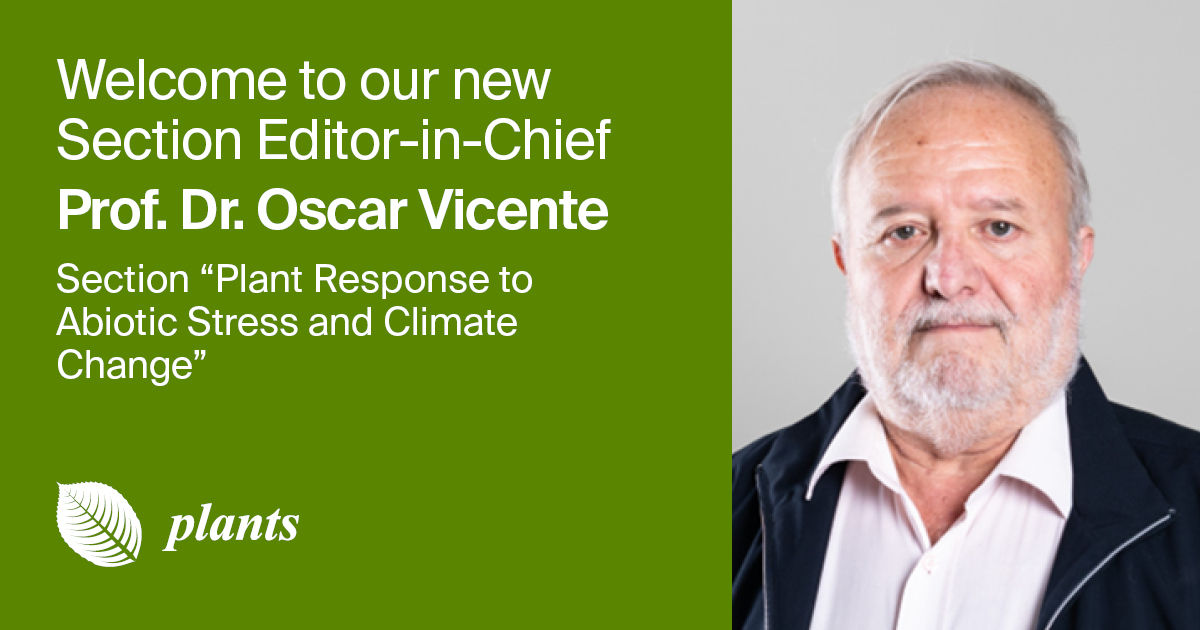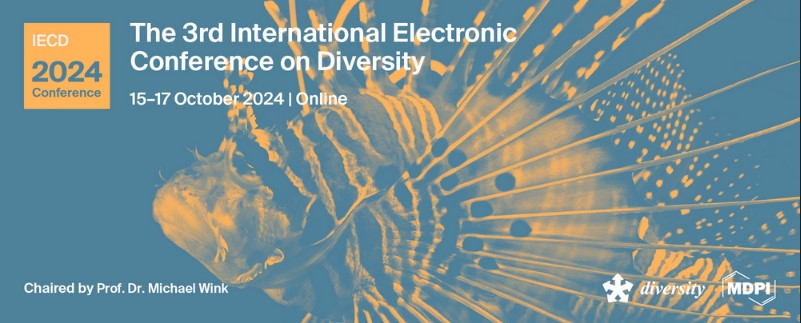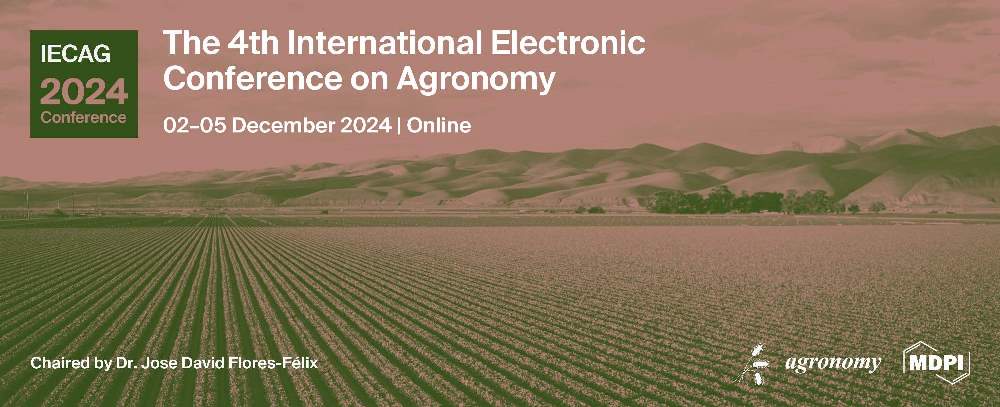-
 Effects of Mars Global Simulant (MGS-1) on Growth and Physiology of Sweet Potato: A Space Model Plant
Effects of Mars Global Simulant (MGS-1) on Growth and Physiology of Sweet Potato: A Space Model Plant -
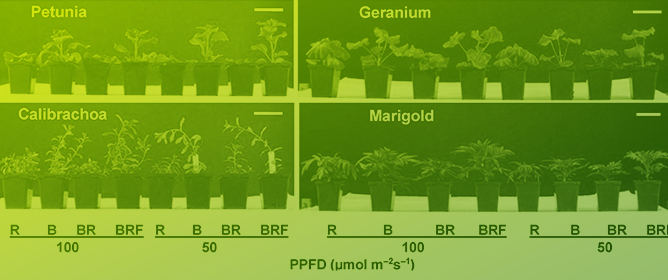 Magic Blue Light: A Versatile Mediator of Plant Elongation
Magic Blue Light: A Versatile Mediator of Plant Elongation -
 Calmodulin-Domain Protein Kinase PiCDPK1 Interacts with the 14-3-3-like Protein NtGF14 to Modulate Pollen Tube Growth
Calmodulin-Domain Protein Kinase PiCDPK1 Interacts with the 14-3-3-like Protein NtGF14 to Modulate Pollen Tube Growth -
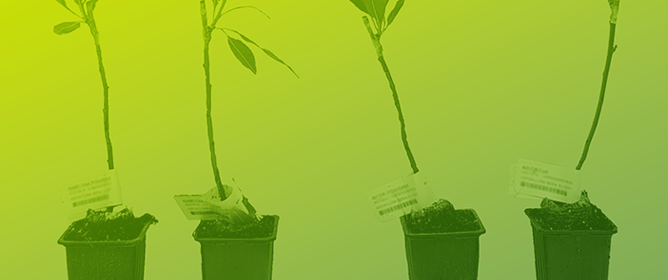 Characterization of Almond Scion/Rootstock Communication in Cultivar and Rootstock Tissues through an RNA-Seq Approach
Characterization of Almond Scion/Rootstock Communication in Cultivar and Rootstock Tissues through an RNA-Seq Approach
Journal Description
Plants
Plants
is an international, scientific, peer-reviewed, open access journal on plant science published semimonthly online by MDPI. The Australian Society of Plant Scientists (ASPS), the Spanish Phytopathological Society (SEF), the Spanish Society of Plant Physiology (SEFV), the Spanish Society of Horticultural Sciences (SECH) and the Italian Society of Phytotherapy (S.I.Fit.) are affiliated with Plants and their members receive a discount on the article processing charges.
- Open Access— free for readers, with article processing charges (APC) paid by authors or their institutions.
- High Visibility: indexed within Scopus, SCIE (Web of Science), PubMed, PMC, PubAg, AGRIS, CAPlus / SciFinder, and other databases.
- Journal Rank: JCR - Q1 (Plant Sciences) / CiteScore - Q1 (Plant Science)
- Rapid Publication: manuscripts are peer-reviewed and a first decision is provided to authors approximately 15.3 days after submission; acceptance to publication is undertaken in 2.8 days (median values for papers published in this journal in the second half of 2023).
- Recognition of Reviewers: reviewers who provide timely, thorough peer-review reports receive vouchers entitling them to a discount on the APC of their next publication in any MDPI journal, in appreciation of the work done.
Impact Factor:
4.5 (2022);
5-Year Impact Factor:
4.8 (2022)
Latest Articles
Changes in Growth and Heavy Metal and Phenolic Compound Accumulation in Buddleja cordata Cell Suspension Culture under Cu, Fe, Mn, and Zn Enrichment
Plants 2024, 13(8), 1147; https://0-doi-org.brum.beds.ac.uk/10.3390/plants13081147 - 19 Apr 2024
Abstract
Buddleja cordata cell suspension cultures could be used as a tool for investigating the capabilities of this species to tolerate heavy metals (HMs) and for assessing the effects of HMs on the accumulation of phenolic compounds in this species. It grows in a
[...] Read more.
Buddleja cordata cell suspension cultures could be used as a tool for investigating the capabilities of this species to tolerate heavy metals (HMs) and for assessing the effects of HMs on the accumulation of phenolic compounds in this species. It grows in a wide range of habitats in Mexico, including ultramafic soils, and mobilizes some HMs in the soil. The mobilization of these HMs has been associated with phenolic substances. In addition, this species is used in Mexican traditional medicine. In the present study, a B. cordata cell suspension culture was grown for 18 days in a culture medium enriched with Cu (0.03–0.25 mM), Fe (0.25–1.5 mM), Mn (0.5–3.0 mM), or Zn (0.5–2.0 mM) to determine the effects of these HMs on growth and HM accumulation. We also assessed the effects of the HMs on phenolic compound accumulation after 1 and 18 days of HM exposure. Cells were able to grow at almost all tested HM concentrations and accumulated significant amounts of each HM. The highest accumulation levels were as follows: 1160 mg Cu kg−1, 6845 mg Fe kg−1, 3770 mg Mn kg−1, and 6581 mg Zn kg−1. Phenolic compound accumulation was affected by the HM exposure time and corresponded to each HM and its concentration. Future research should analyze whole plants to determine the capabilities of Buddleja cordata to accumulate abnormally high amounts of HM and to evaluate the physiological impact of changes in the accumulation of phenolic compounds.
Full article
(This article belongs to the Special Issue Abiotic Stress Responses in Plants)
Open AccessArticle
Interaction of Soybean (Glycine max (L.) Merr.) Class II ACBPs with MPK2 and SAPK2 Kinases: New Insights into the Regulatory Mechanisms of Plant ACBPs
by
Atieh Moradi, Shiu-Cheung Lung and Mee-Len Chye
Plants 2024, 13(8), 1146; https://0-doi-org.brum.beds.ac.uk/10.3390/plants13081146 - 19 Apr 2024
Abstract
Plant acyl-CoA-binding proteins (ACBPs) function in plant development and stress responses, with some ACBPs interacting with protein partners. This study tested the interaction between two Class II GmACBPs (Glycine max ACBPs) and seven kinases, using yeast two-hybrid (Y2H) assays and bimolecular fluorescence
[...] Read more.
Plant acyl-CoA-binding proteins (ACBPs) function in plant development and stress responses, with some ACBPs interacting with protein partners. This study tested the interaction between two Class II GmACBPs (Glycine max ACBPs) and seven kinases, using yeast two-hybrid (Y2H) assays and bimolecular fluorescence complementation (BiFC). The results revealed that both GmACBP3.1 and GmACBP4.1 interact with two soybean kinases, a mitogen-activated protein kinase MPK2, and a serine/threonine-protein kinase SAPK2, highlighting the significance of the ankyrin-repeat (ANK) domain in facilitating protein–protein interactions. Moreover, an in vitro kinase assay and subsequent Phos-tag SDS-PAGE determined that GmMPK2 and GmSAPK2 possess the ability to phosphorylate Class II GmACBPs. Additionally, the kinase-specific phosphosites for Class II GmACBPs were predicted using databases. The HDOCK server was also utilized to predict the binding models of Class II GmACBPs with these two kinases, and the results indicated that the affected residues were located in the ANK region of Class II GmACBPs in both docking models, aligning with the findings of the Y2H and BiFC experiments. This is the first report describing the interaction between Class II GmACBPs and kinases, suggesting that Class II GmACBPs have potential as phospho-proteins that impact signaling pathways.
Full article
(This article belongs to the Special Issue Plant Protein Biochemistry and Biomolecular Interactions)
Open AccessArticle
Exploring the Volatile Composition and Antibacterial Activity of Edible Flower Hydrosols with Insights into Their Spontaneous Emissions and Essential Oil Chemistry
by
Basma Najar, Ylenia Pieracci, Filippo Fratini, Laura Pistelli, Barbara Turchi, Dario Varriale, Luisa Pistelli, Maria Francesca Bozzini and Ilaria Marchioni
Plants 2024, 13(8), 1145; https://0-doi-org.brum.beds.ac.uk/10.3390/plants13081145 - 19 Apr 2024
Abstract
In the circular economy framework, hydrosols, by-products of the essential oil industry, are gaining attention for their potential in waste reduction and resource reuse. This study analyzed hydrosols from six edible flowers, investigating their chemical composition (VOC-Hyd) and antibacterial properties alongside volatile organic
[...] Read more.
In the circular economy framework, hydrosols, by-products of the essential oil industry, are gaining attention for their potential in waste reduction and resource reuse. This study analyzed hydrosols from six edible flowers, investigating their chemical composition (VOC-Hyd) and antibacterial properties alongside volatile organic compounds of fresh flowers (VOC-Fs) and essential oils (EOs). Antirrhinum majus exhibited ketones as major VOC-Fs (62.6%) and VOC-Hyd (41.4%), while apocarotenoids dominated its EOs (68.0%). Begonia cucullata showed alkanes (33.7%) and aldehydes (25.7%) as primary VOC-Fs, while alkanes were prevalent in both extracts (65.6% and 91.7% in VOC-Hyd and in EOs, respectively). Calandula officinalis had monoterpenoids in VOC-Fs and VOC-Hyd (89.3% and 49.7%, respectively), while its EOs were rich in sesquiterpenoids (59.7%). Dahlia hortensis displayed monoterpenoid richness in both VOC-Fs and extracts. Monocots species’ VOC-Fs (Polianthes tuberosa, Tulbaghia cominsii) were esters-rich, replaced by monoterpenoids in VOC-Hyd. P. tuberosa EO maintained ester richness, while T. cominsii EOs contained a significant percentage of sulfur compounds (38.1%). Antibacterial assays indicated comparable minimum inhibitory concentration profiles across VOC-Hyd: B. calcullata and P. tuberosa against Staphylococcus aureus and Salmonella enterica ser. typhimurium, T. cominsii against Escherichia coli and S. enterica, A. majus and C. officinalis against S. aureus, and D. hortensis against S. enterica.
Full article
(This article belongs to the Special Issue Phytochemical Analyses of Secondary Metabolites of Aromatic, Medicinal and Food Plants)
►▼
Show Figures
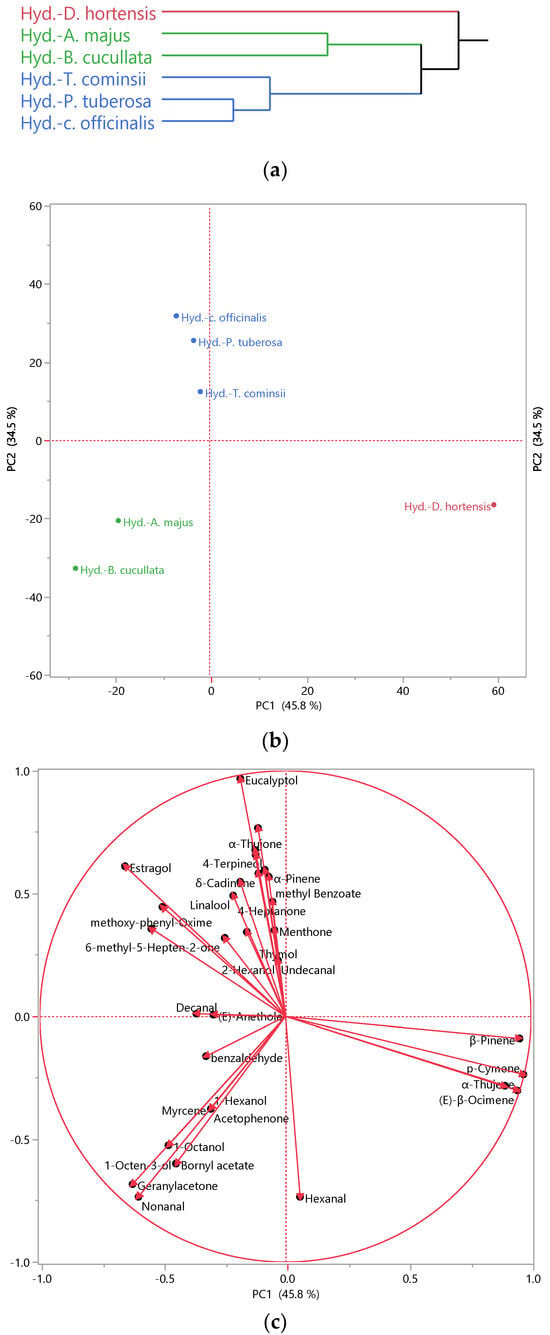
Figure 1
Open AccessArticle
Last-Century Forest Dynamics in a Highland Pyrenean National Park and Implications for Conservation
by
Valentí Rull, Arnau Blasco, Javier Sigro and Teresa Vegas-Vilarrúbia
Plants 2024, 13(8), 1144; https://0-doi-org.brum.beds.ac.uk/10.3390/plants13081144 - 19 Apr 2024
Abstract
Ecological records from before and after the creation of natural parks are valuable for informing conservation and management but are often unavailable. High-resolution paleoecological studies may bridge the gap and provide the required information. This paper presents a 20th-century subdecadal reconstruction of vegetation
[...] Read more.
Ecological records from before and after the creation of natural parks are valuable for informing conservation and management but are often unavailable. High-resolution paleoecological studies may bridge the gap and provide the required information. This paper presents a 20th-century subdecadal reconstruction of vegetation and landscape dynamics in a national park of the Pyrenean highlands. The park lands had traditionally been used for cultivation, extensive grazing, forest exploitation, and hydroelectricity generation following the damming of numerous glacial lakes. A significant finding is that forests have dominated the landscape, with negligible changes in composition, and only experienced fluctuations in forest cover, influenced by both climatic and anthropogenic factors. The creation of the park (1955) and the initial restrictions on forest exploitation did not significantly affect vegetation cover or composition. Major forest expansion did not occur until several decades later, 1980, when the park was enlarged and forest exploitation was further restricted. This expansion peaked in the 1990s, coinciding with a warming trend and a decrease in fire incidence, before declining due to warmer and drier climates. This decline was coeval with the ongoing global forest dieback and may be exacerbated by the predicted global warming in this century, which could also increase fire incidence due to dead-wood accumulation. Currently, the main threats are global warming/drying, fire, and tourism intensification. Similar high-resolution paleoecological records in protected areas are globally scarce and would be capable in providing the long-term ecological scope required to properly understand forest dynamics and optimize conservation measures.
Full article
(This article belongs to the Special Issue Forest Disturbance and Management)
►▼
Show Figures

Figure 1
Open AccessArticle
Combined Application of Biochar and Plant Growth-Promoting Rhizobacteria Improves Heavy Metal and Drought Stress Tolerance in Zea mays
by
Vadivel Anbuganesan, Ramasamy Vishnupradeep, L. Benedict Bruno, Krishnan Sharmila, Helena Freitas and Mani Rajkumar
Plants 2024, 13(8), 1143; https://0-doi-org.brum.beds.ac.uk/10.3390/plants13081143 - 19 Apr 2024
Abstract
Plants are often exposed to multiple stresses, including heavy metals (HM) and drought, which limit the plant growth and productivity. Though biochar or plant growth-promoting rhizobacteria (PGPR) have been widely used for alleviating HM or drought stress in plants, the study of the
[...] Read more.
Plants are often exposed to multiple stresses, including heavy metals (HM) and drought, which limit the plant growth and productivity. Though biochar or plant growth-promoting rhizobacteria (PGPR) have been widely used for alleviating HM or drought stress in plants, the study of the effects of combined treatment with biochar and PGPR under simultaneous HM and drought stress is limited. This study investigated individual and combined effects of groundnut shell biochar (GS-BC) and PGPR Bacillus pseudomycoides strain ARN7 on Zea mays growth, physiology, and HM accumulation, along with their impact on soil enzymes under HM (Ni and Zn), drought, or HM+drought stress. It was observed that even under HM+drought stress, Z. mays growth, total chlorophyll, proteins, phenolics, and relative water contents were increased in response to combined GS-BC and ARN7 treatment. Furthermore, the combined treatment positively influenced plant superoxide dismutase, ascorbate peroxidase, and catalase activities, while reducing electrolyte leakage and phenolics, malondialdehyde, and proline under HM, drought, or HM+drought stress. Interestingly, the combined GS-BC and ARN7 treatment decreased HM accumulation and the bioaccumulation factor in Z. mays, highlighting that the combined treatment is suitable for improving HM phytostabilization. Additionally, GS-BC increased soil enzymatic activities and ARN7 colonization irrespective of HM and drought stress. As far as we know, this study is the first to illustrate that combined biochar and PGPR treatment could lessen the adverse effects of both HM and drought, suggesting that such treatment can be used in water-deficient HM-contaminated areas to improve plant growth and reduce HM accumulation in plants.
Full article
(This article belongs to the Special Issue Exploring Recent Biotechnological Advances for Improved Phytoremediation of Soil Contaminants)
►▼
Show Figures

Figure 1
Open AccessArticle
The Role of FveAFB5 in Auxin-Mediated Responses and Growth in Strawberries
by
Xuhui Wang, Shuo Feng, Jiangshan Luo, Shikui Song, Juncheng Lin, Yunhe Tian, Tongda Xu and Jun Ma
Plants 2024, 13(8), 1142; https://0-doi-org.brum.beds.ac.uk/10.3390/plants13081142 - 19 Apr 2024
Abstract
Auxin is a crucial hormone that regulates various aspects of plant growth and development. It exerts its effects through multiple signaling pathways, including the TIR1/AFB-based transcriptional regulation in the nucleus. However, the specific role of auxin receptors in determining developmental features in the
[...] Read more.
Auxin is a crucial hormone that regulates various aspects of plant growth and development. It exerts its effects through multiple signaling pathways, including the TIR1/AFB-based transcriptional regulation in the nucleus. However, the specific role of auxin receptors in determining developmental features in the strawberry (Fragaria vesca) remains unclear. Our research has identified FveAFB5, a potential auxin receptor, as a key player in the development and auxin responses of woodland strawberry diploid variety Hawaii 4. FveAFB5 positively influences lateral root development, plant height, and fruit development, while negatively regulating shoot branching. Moreover, the mutation of FveAFB5 confers strong resistance to the auxinic herbicide picloram, compared to dicamba and quinclorac. Transcriptome analysis suggests that FveAFB5 may initiate auxin and abscisic acid signaling to inhibit growth in response to picloram. Therefore, FveAFB5 likely acts as an auxin receptor involved in regulating multiple processes related to strawberry growth and development.
Full article
(This article belongs to the Special Issue Role of Auxin in Plant Growth and Development)
►▼
Show Figures

Figure 1
Open AccessArticle
The Expression of Key Ethylene and Anthocyanin Biosynthetic Genes of ‘Honeycrisp’ Apples Subjected to the Combined Use of Reflective Groundcovers and Aminoethoxyvinylglycine in the Mid-Atlantic US
by
Md Shipon Miah and Macarena Farcuh
Plants 2024, 13(8), 1141; https://0-doi-org.brum.beds.ac.uk/10.3390/plants13081141 - 19 Apr 2024
Abstract
The decreased profitability of important apple cultivars, such as ‘Honeycrisp’, results from the poor red skin coloration and high fruit drop in the mid-Atlantic US. Apple red skin coloration is determined by the anthocyanin concentration. Reflective groundcovers promote red skin coloration, whereas aminoethoxyvinylglycine
[...] Read more.
The decreased profitability of important apple cultivars, such as ‘Honeycrisp’, results from the poor red skin coloration and high fruit drop in the mid-Atlantic US. Apple red skin coloration is determined by the anthocyanin concentration. Reflective groundcovers promote red skin coloration, whereas aminoethoxyvinylglycine (AVG) decreases the ethylene production and fruit drop, thus reducing the coloration. Although our previous study showed that combinations of these practices impact the fruit quality and color, research is lacking regarding their effects at the gene and metabolite levels. In this work, for two years, we compared the differences in the internal ethylene concentration (IEC), red skin coloration, fruit drop, transcript accumulation of key ethylene and anthocyanin biosynthetic pathway-related genes, and total anthocyanin concentration of ‘Honeycrisp’ apples. The fruit was treated with combinations of reflective groundcover (Extenday) and AVG (130 mg L−1) and was assessed throughout ripening. Extenday-only-treated fruit displayed the highest upregulation of ethylene and anthocyanin biosynthetic-related genes and of total anthocyanins, exceeding 50% blush, while boosting the IEC. In contrast, AVG significantly decreased the expression of key ethylene and anthocyanin biosynthetic-related genes and total anthocyanins, thus preventing apples from reaching 50% blush, while also decreasing the IEC and fruit drop. The combination of Extenday x AVG fine-tuned the transcript accumulation of ethylene and anthocyanin biosynthetic-related genes as well as the total anthocyanins, allowing the ‘Honeycrisp’ fruit to exceed 50% blush, while increasing the IEC moderately and reducing the fruit drop (as compared to Extenday-only and control), thus enhancing the fruit economic value.
Full article
(This article belongs to the Special Issue Horticultural Plant Cultivation and Fruit Quality Enhancement)
►▼
Show Figures
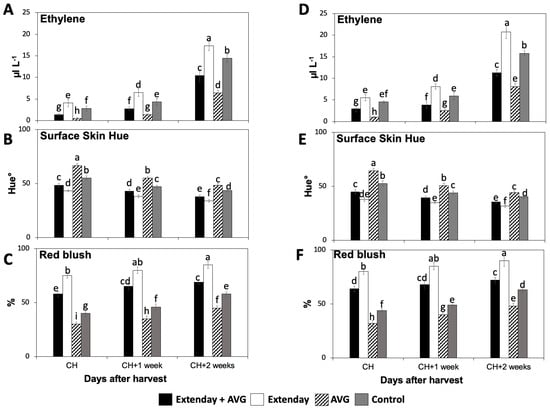
Figure 1
Open AccessArticle
Non-Thermal Plasma (NTP) Treatment of Alfalfa Seeds in Different Voltage Conditions Leads to Both Positive and Inhibitory Outcomes Related to Sprout Growth and Nutraceutical Properties
by
Iuliana Motrescu, Constantin Lungoci, Anca Elena Calistru, Camelia Elena Luchian, Tincuta Marta Gocan, Cristina Mihaela Rimbu, Emilian Bulgariu, Mihai Alexandru Ciolan and Gerard Jitareanu
Plants 2024, 13(8), 1140; https://0-doi-org.brum.beds.ac.uk/10.3390/plants13081140 - 19 Apr 2024
Abstract
Non-thermal plasma (NTP) has proven to be a green method in the agricultural field for the stimulation of germination, growth, and production of nutraceutical compounds in some cases. However, the process is far from being fully understood and depends on the targeted plant
[...] Read more.
Non-thermal plasma (NTP) has proven to be a green method in the agricultural field for the stimulation of germination, growth, and production of nutraceutical compounds in some cases. However, the process is far from being fully understood and depends on the targeted plant species and the NTP used. In this work, we focus on the production of alfalfa sprouts from NTP-treated seeds under different voltage conditions. A flexible electrode configuration was used to produce the NTP, which can also be placed on packages for in-package treatments. The surface of the seeds was analyzed, indicating that the microstructure was strongly affected by NTP treatment. Biometric measurements evidenced the possibility of stimulating the sprout growth in some conditions by up to 50% compared to the sprouts obtained from untreated seeds. Biochemical traits for the sprouts obtained in different processing conditions were also studied, such as the concentrations of chlorophyll pigments, flavonoids and polyphenols, and antioxidant activity. Most NTP treatments led to inhibitory effects, proving the strong dependence between NTP treatment and targeted plant species.
Full article
(This article belongs to the Special Issue Effects of Non-thermal Plasma Treatment on Plant Physiological and Biochemical Processes II)
►▼
Show Figures
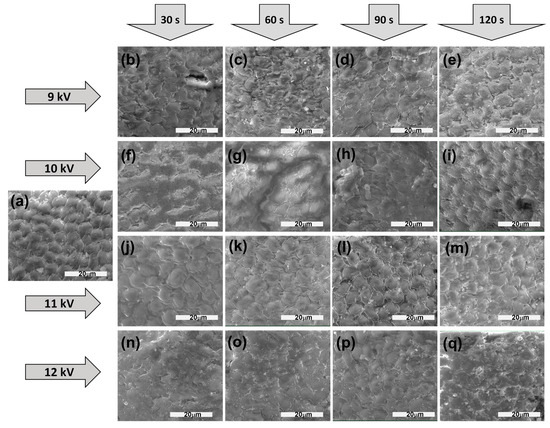
Figure 1
Open AccessArticle
Distribution and Mechanism of Japanese Brome (Bromus japonicus) Resistance to ALS-Inhibiting Herbicides in China
by
Linzhi Bai, Xiangju Li, Xiaotong Guo, Jingchao Chen, Haiyan Yu and Hailan Cui
Plants 2024, 13(8), 1139; https://0-doi-org.brum.beds.ac.uk/10.3390/plants13081139 - 19 Apr 2024
Abstract
Bromus japonicus is a common monocot weed that occurs in major winter wheat fields in the Huang–Huai–Hai region of China. Pyroxsulam is a highly efficient and safe acetolactate synthase (ALS)-inhibiting herbicide that is widely used to control common weeds in wheat fields. However,
[...] Read more.
Bromus japonicus is a common monocot weed that occurs in major winter wheat fields in the Huang–Huai–Hai region of China. Pyroxsulam is a highly efficient and safe acetolactate synthase (ALS)-inhibiting herbicide that is widely used to control common weeds in wheat fields. However, B. japonicus populations in China have evolved resistance to pyroxsulam by different mutations in the ALS gene. To understand the resistance distribution, target-site resistance mechanisms, and cross-resistance patterns, 208 B. japonicus populations were collected from eight provinces. In the resistant population screening experiment, 59 populations from six provinces showed different resistance levels to pyroxsulam compared with the susceptible population, of which 17 B. japonicus populations with moderate or high levels of resistance to pyroxsulam were mainly from the Hebei (4), Shandong (4) and Shanxi (9) Provinces. Some resistant populations were selected to investigate the target site-resistance mechanism to the ALS-inhibiting herbicide pyroxsulam. Three pairs of primers were designed to amplify the ALS sequence, which was assembled into the complete ALS sequence with a length of 1932 bp. DNA sequencing of ALS revealed that four different ALS mutations (Pro-197-Ser, Pro-197-Thr, Pro-197-Phe and Asp-376-Glu) were found in 17 moderately or highly resistant populations. Subsequently, five resistant populations, QM21-41 with Pro-197-Ser, QM20-8 with Pro-197-Thr and Pro-197-Phe, and QM21-72, QM21-76 and QM21-79 with Asp-376-Glu mutations in ALS genes, were selected to characterize their cross-resistance patterns to ALS inhibitors. The QM21-41, QM20-8, QM21-72, QM21-76 and QM21-79 populations showed broad-spectrum cross-resistance to pyroxsulam, mesosulfuron–methyl and flucarbazone–sodium. This study is the first to report evolving cross-resistance to ALS-inhibiting herbicides due to Pro-197-Phe mutations in B. japonicus.
Full article
(This article belongs to the Section Plant Protection and Biotic Interactions)
►▼
Show Figures
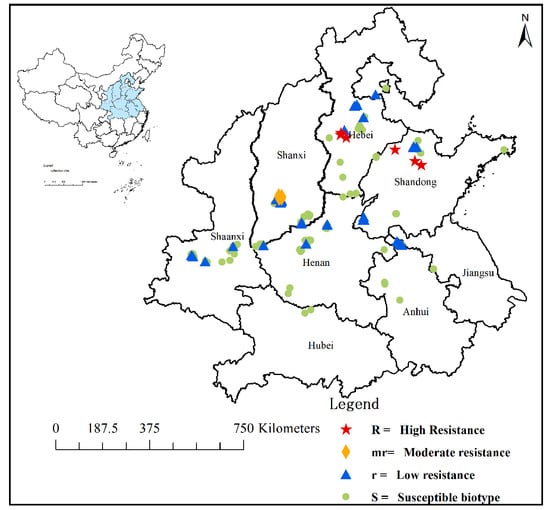
Figure 1
Open AccessArticle
Improvement of Broad-Spectrum Disease-Resistant Rice by the Overexpression of BSR1 via a Moderate-Strength Constitutive Promoter and a Pathogen-Inducible Promoter
by
Satoru Maeda, Shingo Goto, Haruhiko Inoue, Haruka Suwazono, Hiroshi Takatsuji and Masaki Mori
Plants 2024, 13(8), 1138; https://0-doi-org.brum.beds.ac.uk/10.3390/plants13081138 - 18 Apr 2024
Abstract
Conferring crops with resistance to multiple diseases is crucial for stable food production. Genetic engineering is an effective means of achieving this. The rice receptor-like cytoplasmic kinase BSR1 mediates microbe-associated molecular pattern-induced immunity. In our previous study, we demonstrated that rice lines overexpressing
[...] Read more.
Conferring crops with resistance to multiple diseases is crucial for stable food production. Genetic engineering is an effective means of achieving this. The rice receptor-like cytoplasmic kinase BSR1 mediates microbe-associated molecular pattern-induced immunity. In our previous study, we demonstrated that rice lines overexpressing BSR1 under the control of the maize ubiquitin promoter exhibited broad-spectrum resistance to rice blast, brown spot, leaf blight, and bacterial seedling rot. However, unfavorable phenotypes were observed, such as a decreased seed germination rate and a partial darkening of husked rice. Herein, we present a strategy to address these unfavorable phenotypes using an OsUbi7 constitutive promoter with moderate expression levels and a pathogen-inducible PR1b promoter. Rice lines expressing BSR1 under the influence of both promoters maintained broad-spectrum disease resistance. The seed germination rate and coloration of husked rice were similar to those of the wild-type rice.
Full article
(This article belongs to the Special Issue Broad-Spectrum Disease Resistance in Plants)
►▼
Show Figures

Figure 1
Open AccessReview
Biological Activity of Artificial Plant Peptides Corresponding to the Translational Products of Small ORFs in Primary miRNAs and Other Long “Non-Coding” RNAs
by
T. N. Erokhina, D. Y. Ryazantsev, S. K. Zavriev and S. Y. Morozov
Plants 2024, 13(8), 1137; https://0-doi-org.brum.beds.ac.uk/10.3390/plants13081137 - 18 Apr 2024
Abstract
Generally, lncPEPs (peptides encoded by long non-coding RNAs) have been identified in many plant species of several families and in some animal species. Importantly, molecular mechanisms of the miPEPs (peptides encoded by primary microRNAs, pri-miRNAs) are often poorly understood in different flowering plants.
[...] Read more.
Generally, lncPEPs (peptides encoded by long non-coding RNAs) have been identified in many plant species of several families and in some animal species. Importantly, molecular mechanisms of the miPEPs (peptides encoded by primary microRNAs, pri-miRNAs) are often poorly understood in different flowering plants. Requirement for the additional studies in these directions is highlighted by alternative findings concerning positive regulation of pri-miRNA/miRNA expression by synthetic miPEPs in plants. Further extensive studies are also needed to understand the full set of their roles in eukaryotic organisms. This review mainly aims to consider the available data on the regulatory functions of the synthetic miPEPs. Studies of chemically synthesized miPEPs and analyzing the fine molecular mechanisms of their functional activities are reviewed. Brief description of the studies to identify lncORFs (open reading frames of long non-coding RNAs) and the encoded protein products is also provided.
Full article
(This article belongs to the Special Issue Epigenetics and Genome Evolution in Plants)
►▼
Show Figures
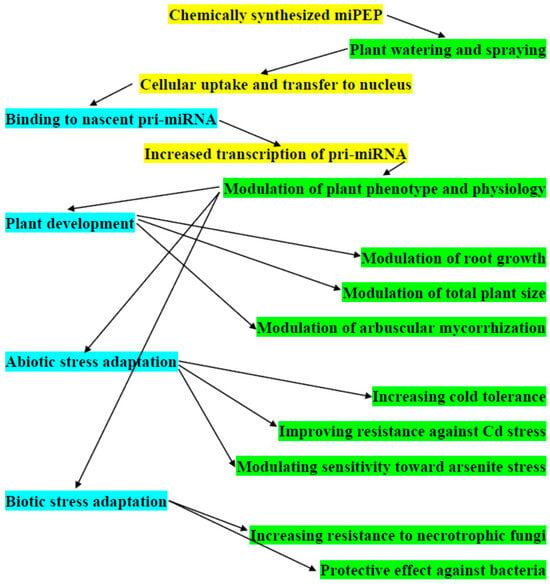
Figure 1
Open AccessArticle
Enhancing Postharvest Quality and Shelf Life of Strawberries through Advanced Coating Technologies: A Comprehensive Investigation of Chitosan and Glycine Betaine Nanoparticle Treatments
by
Reza Bahmani, Farhang Razavi, Seyed Najmmaddin Mortazavi, Gholamreza Gohari and Antonio Juárez-Maldonado
Plants 2024, 13(8), 1136; https://0-doi-org.brum.beds.ac.uk/10.3390/plants13081136 - 18 Apr 2024
Abstract
The application of natural polymer-based coatings presents a viable approach to prolong the longevity of fruits and tissue damage. This study investigates the impact of treatments involving glycine betaine (GB), chitosan (CTS), and chitosan-coated glycine betaine nanoparticles (CTS-GB NPs) on preserving the quality
[...] Read more.
The application of natural polymer-based coatings presents a viable approach to prolong the longevity of fruits and tissue damage. This study investigates the impact of treatments involving glycine betaine (GB), chitosan (CTS), and chitosan-coated glycine betaine nanoparticles (CTS-GB NPs) on preserving the quality and reducing decay in strawberry fruits. The fruits were subjected to treatments with GB (1 mM), CTS (0.1%), CTS-GB NPs (0.1%), or distilled water at 20 °C for 5 min, followed by storage at 4 °C for 12 days. The results indicate that CTS and CTS-GB NPs treatments resulted in the highest tissue firmness, total anthocyanin content, and ascorbate peroxidase activity, while exhibiting the lowest decay percentage and weight loss, as well as reduced malondialdehyde levels at the end of storage. GB, CTS, and CTS-GB NPs treatments demonstrated elevated catalase activity and antioxidant capacity, coupled with lower electrolyte leakage and hydrogen peroxide levels. These treatments did not significantly differ from each other but were markedly different from the control. The results substantiate that CTS and CTS-GB NPs treatments effectively preserve strawberry quality and extend storage life by bolstering antioxidant capacity and mitigating free radical damage.
Full article
(This article belongs to the Special Issue Plant Biostimulation 2nd Edition)
►▼
Show Figures
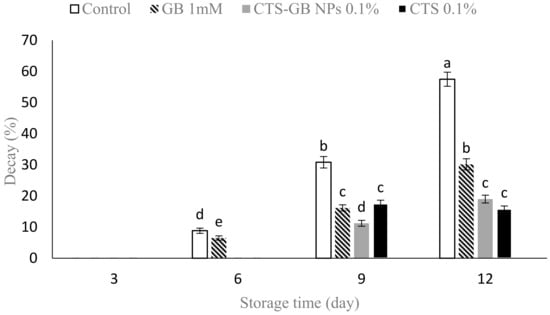
Figure 1
Open AccessReview
Antibiotic Resistance in Plant Pathogenic Bacteria: Recent Data and Environmental Impact of Unchecked Use and the Potential of Biocontrol Agents as an Eco-Friendly Alternative
by
Tarequl Islam, Md Azizul Haque, Hasi Rani Barai, Arif Istiaq and Jong-Joo Kim
Plants 2024, 13(8), 1135; https://0-doi-org.brum.beds.ac.uk/10.3390/plants13081135 - 18 Apr 2024
Abstract
The economic impact of phytopathogenic bacteria on agriculture is staggering, costing billions of US dollars globally. Pseudomonas syringae is the top most phytopathogenic bacteria, having more than 60 pathovars, which cause bacteria speck in tomatoes, halo blight in beans, and so on. Although
[...] Read more.
The economic impact of phytopathogenic bacteria on agriculture is staggering, costing billions of US dollars globally. Pseudomonas syringae is the top most phytopathogenic bacteria, having more than 60 pathovars, which cause bacteria speck in tomatoes, halo blight in beans, and so on. Although antibiotics or a combination of antibiotics are used to manage infectious diseases in plants, they are employed far less in agriculture compared to human and animal populations. Moreover, the majority of antibiotics used in plants are immediately washed away, leading to environmental damage to ecosystems and food chains. Due to the serious risk of antibiotic resistance (AR) and the potential for environmental contamination with antibiotic residues and resistance genes, the use of unchecked antibiotics against phytopathogenic bacteria is not advisable. Despite the significant concern regarding AR in the world today, there are inadequate and outdated data on the AR of phytopathogenic bacteria. This review presents recent AR data on plant pathogenic bacteria (PPB), along with their environmental impact. In light of these findings, we suggest the use of biocontrol agents as a sustainable, eco-friendly, and effective alternative to controlling phytopathogenic bacteria.
Full article
(This article belongs to the Section Plant Response to Abiotic Stress and Climate Change)
►▼
Show Figures

Figure 1
Open AccessArticle
Identification of Chromosomal Regions and Candidate Genes for Round leaf Locus in Cucumis melo L.
by
Xufeng Fang, Zicheng Zhu, Junyan Li, Xuezheng Wang, Chunhua Wei, Xian Zhang, Zuyun Dai, Shi Liu and Feishi Luan
Plants 2024, 13(8), 1134; https://0-doi-org.brum.beds.ac.uk/10.3390/plants13081134 - 18 Apr 2024
Abstract
Leaf morphology plays a crucial role in plant classification and provides a significant model for studying plant diversity while directly impacting photosynthetic efficiency. In the case of melons, leaf shape not only influences production and classification but also represents a key genetic trait
[...] Read more.
Leaf morphology plays a crucial role in plant classification and provides a significant model for studying plant diversity while directly impacting photosynthetic efficiency. In the case of melons, leaf shape not only influences production and classification but also represents a key genetic trait that requires further exploration. In this study, we utilized forward genetics to pinpoint a recessive locus, dubbed Cmrl (Round leaf), which is responsible for regulating melon leaf shape. Through bulked segregant analysis sequencing and extensive evaluation of a two-year F2 population, we successfully mapped the Cmrl locus to a 537.07 kb region on chromosome 8 of the melon genome. Subsequent genetic fine-mapping efforts, leveraging a larger F2 population encompassing 1322 plants and incorporating F2:3 phenotypic data, further refined the locus to an 80.27 kb interval housing five candidate genes. Promoter analysis and coding sequence cloning confirmed that one of these candidates, MELO3C019152.2 (Cmppr encoding a pentatricopeptide repeat-containing family protein, Cmppr), stands out as a strong candidate gene for the Cmrl locus. Notably, comparisons of Cmrl expressions across various stages of leaf development and different leaf regions suggest a pivotal role of Cmrl in the morphogenesis of melon leaves.
Full article
(This article belongs to the Section Plant Genetics, Genomics and Biotechnology)
►▼
Show Figures
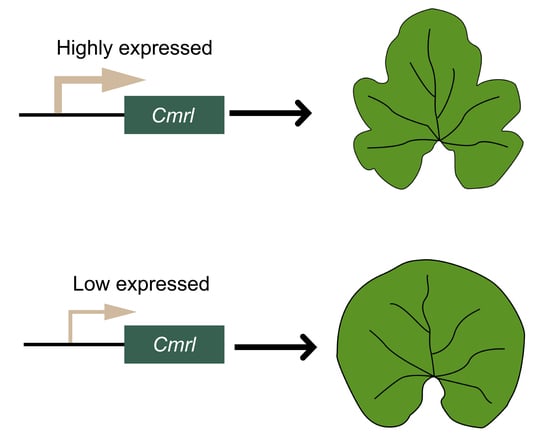
Graphical abstract
Open AccessEditorial
Plant Biotechnology—An Indispensable Tool for Crop Improvement
by
Ranjith Pathirana and Francesco Carimi
Plants 2024, 13(8), 1133; https://0-doi-org.brum.beds.ac.uk/10.3390/plants13081133 - 18 Apr 2024
Abstract
Traditional plant breeding has helped to increase food production dramatically over the past five decades, and many countries have managed to produce enough food for the growing population, particularly in the developing world [...]
Full article
(This article belongs to the Special Issue Plant Biotechnology and Crop Improvement)
►▼
Show Figures
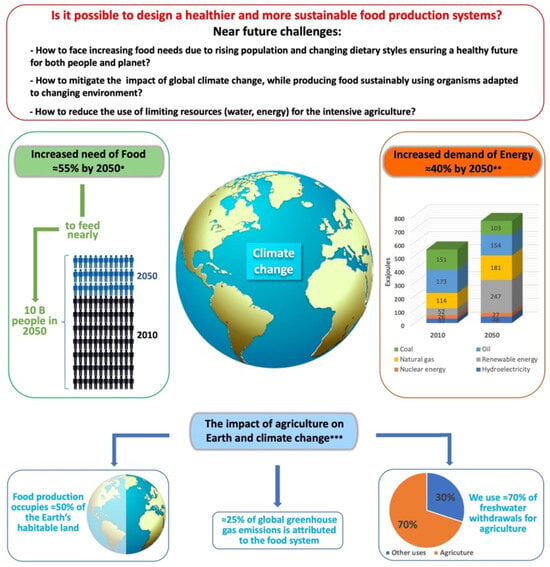
Figure 1
Open AccessEditorial
Plant Signaling, Behavior and Communication
by
Frantisek Baluska and Gustavo Maia Souza
Plants 2024, 13(8), 1132; https://0-doi-org.brum.beds.ac.uk/10.3390/plants13081132 - 18 Apr 2024
Abstract
Being sessile organisms that need to effectively explore space (above and below ground) and acquire resources through growth, plants must simultaneously consider multiple possibilities and wisely balance the energy they spend on growth with the benefits for survival [...]
Full article
(This article belongs to the Special Issue Plant Signaling, Behavior and Communication)
Open AccessArticle
Influence of the Drying Process on the Volatile Profile of Different Capsicum Species
by
Cosimo Taiti, Diego Comparini, Lavinia Moscovini, Simona Violino, Corrado Costa and Stefano Mancuso
Plants 2024, 13(8), 1131; https://0-doi-org.brum.beds.ac.uk/10.3390/plants13081131 - 18 Apr 2024
Abstract
Chili is a globally significant spice used fresh or dried for culinary, condiment, and medicinal purposes. Growing concerns about food safety have increased the demand for high-quality products and non-invasive tools for quality control like origin tracing and safety assurance. Volatile analysis offers
[...] Read more.
Chili is a globally significant spice used fresh or dried for culinary, condiment, and medicinal purposes. Growing concerns about food safety have increased the demand for high-quality products and non-invasive tools for quality control like origin tracing and safety assurance. Volatile analysis offers a rapid, comprehensive, and safe method for characterizing various food products. Thus, this study aims to assess the impact of the drying process on the aromatic composition of various Capsicum species and to identify key compounds driving the aromatic complexity of each genetic makeup. To accomplish these objectives, the aroma was examined in fruits collected from 19 different pepper accessions (Capsicum sp.) belonging to four species: one ancestral (C. chacoense) and three domesticated pepper species (C. annuum, C. baccatum and C. chinense). Fresh and dried samples were analyzed using a headspace PTR-TOF-MS platform. Our findings reveal significant changes in the composition and concentration of volatile organic compounds (VOCs) from fresh to dried Capsicum. Notably, chili peppers of the species C. chinense consistently exhibited higher emission intensity and a more complex aroma compared to other species (both fresh and dried). Overall, the data clearly demonstrate that the drying process generally leads to a reduction in the intensity and complexity of the aromatic compounds emitted. Specifically, fresh peppers showed higher volatile organic compounds content compared to dried ones, except for the two sweet peppers studied, which exhibited the opposite behavior. Our analysis underscores the variability in the effect of drying on volatile compound composition among different pepper species and even among different cultivars, highlighting key compounds that could facilitate species classification in dried powder. This research serves as a preliminary guide for promoting the utilization of various pepper species and cultivars as powder, enhancing product valorization.
Full article
(This article belongs to the Special Issue Emerging Trends in Sustainable Processing and Technology of Plant-Derived Foods)
►▼
Show Figures
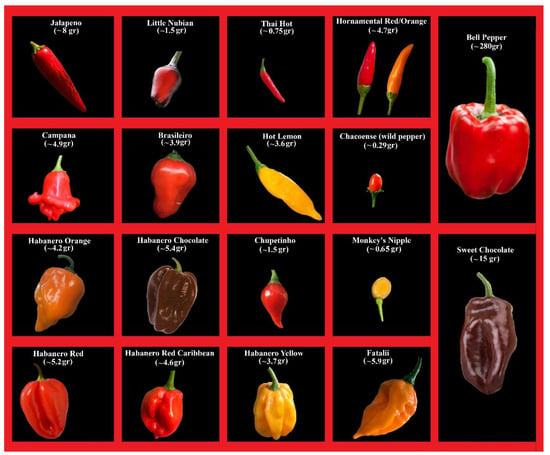
Figure 1
Open AccessCommunication
Fine Mapping of qAL5.2 Controlling Anther Length in Oryza sativa
by
Xinyong Liu, Zixuan Yu, Xiaohong Tong, Longxue Chang, Jie Huang, Yifeng Wang, Jiezheng Ying, Xingwang Li, Shen Ni and Jian Zhang
Plants 2024, 13(8), 1130; https://0-doi-org.brum.beds.ac.uk/10.3390/plants13081130 - 18 Apr 2024
Abstract
Anther length is the critical floral trait determining hybrid rice seed production and is controlled by many quantitative trait loci (QTL). However, the cloning of genes specifically controlling anther size has yet to be reported. Here, we report the fine mapping of qAL5.2
[...] Read more.
Anther length is the critical floral trait determining hybrid rice seed production and is controlled by many quantitative trait loci (QTL). However, the cloning of genes specifically controlling anther size has yet to be reported. Here, we report the fine mapping of qAL5.2 for anther size using backcross inbred lines (BILs) in the genetic background of Oryza sativa indica Huazhan (HZ). Gene chip analysis on the BC4F2 and BC5F1 population identified effective loci on Chr1, Chr5, and Chr8 and two genomic regions on Chr5, named qAL5.1 and qAL5.2. qAL5.2 was identified in both populations with LOD values of 17.54 and 10.19, which explained 35.73% and 25.1% of the phenotypic variances, respectively. Ultimately qAL5.2 was localized to a 73 kb region between HK139 and HK140 on chromosome 5. And we constructed two near-isogenic lines (NILs) for RNA-seq analysis, named NIL-qAL5.2HZ and NIL-qAL5.2KLY, respectively. The result of the GO enrichment analysis revealed that differential genes were significantly enriched in the carbohydrate metabolic process, extracellular region, and nucleic acid binding transcription, and KEGG enrichment analysis revealed that alpha-linolenic acid metabolism was significantly enriched. Meanwhile, candidate genes of qAL5.2 were analyzed in RNA-seq, and it was found that ORF8 is differentially expressed between NIL-qAL5.2HZ and NIL-qAL5.2KLY. The fine mapping of qAL5.2 conferring anther length will promote the breed improvement of the restorer line and understanding of the mechanisms driving crop mating patterns.
Full article
(This article belongs to the Special Issue Research on Plant Genomics and Breeding 2023)
►▼
Show Figures
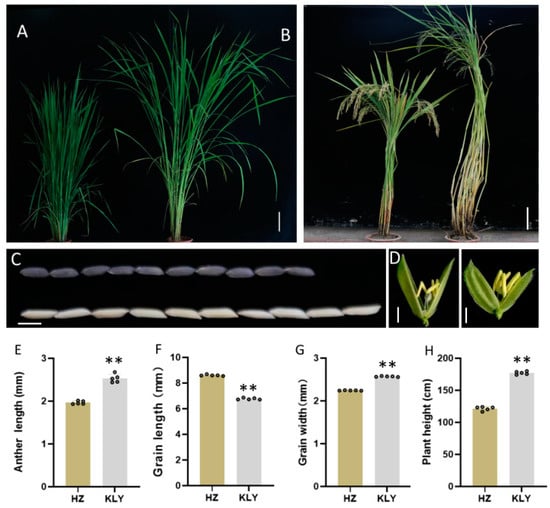
Figure 1
Open AccessReview
The Emerging Role of 2OGDs as Candidate Targets for Engineering Crops with Broad-Spectrum Disease Resistance
by
Han Wang, Qinghe Chen and Wanzhen Feng
Plants 2024, 13(8), 1129; https://0-doi-org.brum.beds.ac.uk/10.3390/plants13081129 - 17 Apr 2024
Abstract
Plant diseases caused by pathogens result in a marked decrease in crop yield and quality annually, greatly threatening food production and security worldwide. The creation and cultivation of disease-resistant cultivars is one of the most effective strategies to control plant diseases. Broad-spectrum resistance
[...] Read more.
Plant diseases caused by pathogens result in a marked decrease in crop yield and quality annually, greatly threatening food production and security worldwide. The creation and cultivation of disease-resistant cultivars is one of the most effective strategies to control plant diseases. Broad-spectrum resistance (BSR) is highly preferred by breeders because it confers plant resistance to diverse pathogen species or to multiple races or strains of one species. Recently, accumulating evidence has revealed the roles of 2-oxoglutarate (2OG)-dependent oxygenases (2OGDs) as essential regulators of plant disease resistance. Indeed, 2OGDs catalyze a large number of oxidative reactions, participating in the plant-specialized metabolism or biosynthesis of the major phytohormones and various secondary metabolites. Moreover, several 2OGD genes are characterized as negative regulators of plant defense responses, and the disruption of these genes via genome editing tools leads to enhanced BSR against pathogens in crops. Here, the recent advances in the isolation and identification of defense-related 2OGD genes in plants and their exploitation in crop improvement are comprehensively reviewed. Also, the strategies for the utilization of 2OGD genes as targets for engineering BSR crops are discussed.
Full article
(This article belongs to the Special Issue Broad-Spectrum Disease Resistance in Plants)
►▼
Show Figures

Figure 1
Open AccessArticle
Integrating Genome-Wide Association Study, Transcriptome and Metabolome Reveal Novel QTL and Candidate Genes That Control Protein Content in Soybean
by
Xunchao Zhao, Hanhan Zhu, Fang Liu, Jie Wang, Changjun Zhou, Ming Yuan, Xue Zhao, Yongguang Li, Weili Teng, Yingpeng Han and Yuhang Zhan
Plants 2024, 13(8), 1128; https://0-doi-org.brum.beds.ac.uk/10.3390/plants13081128 - 17 Apr 2024
Abstract
Protein content (PC) is crucial to the nutritional quality of soybean [Glycine max (L.) Merrill]. In this study, a total of 266 accessions were used to perform a genome-wide association study (GWAS) in three tested environments. A total of 23,131 high-quality SNP
[...] Read more.
Protein content (PC) is crucial to the nutritional quality of soybean [Glycine max (L.) Merrill]. In this study, a total of 266 accessions were used to perform a genome-wide association study (GWAS) in three tested environments. A total of 23,131 high-quality SNP markers (MAF ≥ 0.02, missing data ≤ 10%) were identified. A total of 40 association signals were significantly associated with PC. Among them, five novel quantitative trait nucleotides (QTNs) were discovered, and another 32 QTNs were found to be overlapping with the genomic regions of known quantitative trait loci (QTL) related to soybean PC. Combined with GWAS, metabolome and transcriptome sequencing, 59 differentially expressed genes (DEGs) that might control the change in protein content were identified. Meantime, four commonly upregulated differentially abundant metabolites (DAMs) and 29 commonly downregulated DAMs were found. Remarkably, the soybean gene Glyma.08G136900, which is homologous with Arabidopsis hydroxyproline-rich glycoproteins (HRGPs), may play an important role in improving the PC. Additionally, Glyma.08G136900 was divided into two main haplotype in the tested accessions. The PC of haplotype 1 was significantly lower than that of haplotype 2. The results of this study provided insights into the genetic mechanisms regulating protein content in soybean.
Full article
(This article belongs to the Special Issue Germplasm Resources and Molecular Breeding of Soybean)
►▼
Show Figures
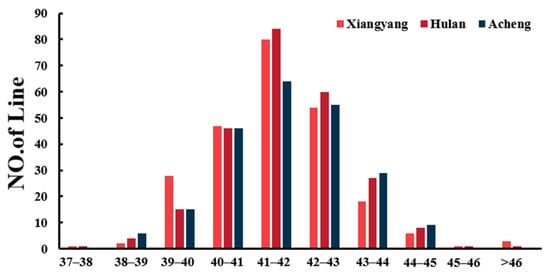
Figure 1

Journal Menu
► ▼ Journal Menu-
- Plants Home
- Aims & Scope
- Editorial Board
- Reviewer Board
- Topical Advisory Panel
- Instructions for Authors
- Special Issues
- Topics
- Sections & Collections
- Article Processing Charge
- Indexing & Archiving
- Editor’s Choice Articles
- Most Cited & Viewed
- Journal Statistics
- Journal History
- Journal Awards
- Society Collaborations
- Conferences
- Editorial Office
Journal Browser
► ▼ Journal BrowserHighly Accessed Articles
Latest Books
E-Mail Alert
News
Topics
Topic in
Antioxidants, IJPB, Molecules, Pharmaceuticals, Plants
Plants Volatile Compounds
Topic Editors: Dario Kremer, Igor Jerković, Valerija DunkićDeadline: 30 April 2024
Topic in
Agronomy, Beverages, Fermentation, Horticulturae, Plants
Grapevine Facing Climate Change: From Land, through Plants to Grapes and Wine
Topic Editors: Othmane Merah, Ana Fernandes De Oliveira, Daniela Satta, Mario Cunha, Jesus Yuste, Jalloul BouajilaDeadline: 30 June 2024
Topic in
Agronomy, Diversity, Forests, IJPB, Plants
Plant Invasion
Topic Editors: Bruce Osborne, Panayiotis G. DimitrakopoulosDeadline: 31 July 2024
Topic in
Agriculture, Agronomy, Microorganisms, Plants, Soil Systems, Nitrogen
Carbon and Nitrogen Cycling in Agro-Ecosystems and Other Anthropogenically Maintained Ecosystems
Topic Editors: Jie Li, Adnan Mustafa, Jan FrouzDeadline: 30 September 2024

Conferences
Special Issues
Special Issue in
Plants
Volatile Compounds Emitted by Flowers: Extraction, Identification, and Application
Guest Editor: Patrick MeffreDeadline: 20 April 2024
Special Issue in
Plants
Grapevine Response to Abiotic Stress
Guest Editors: Sara Amâncio, Carlos Manuel Lopes, Alicia Pou MirDeadline: 30 April 2024
Special Issue in
Plants
Traditional Cultivars as a Genetic Source of Stress Tolerance and Quality Enhancement
Guest Editors: Marija Viljevac Vuletić, Ines MihaljevićDeadline: 25 May 2024
Special Issue in
Plants
Diagnosis and Control of Plant Bacterial Diseases
Guest Editor: Joel L. VannesteDeadline: 31 May 2024
Topical Collections
Topical Collection in
Plants
Advances in Plant Diversification and Biosystematics
Collection Editors: Yang Liu, Ângela Sartori
Topical Collection in
Plants
New Trends in Plant Science in Italy
Collection Editors: Claudio Moser, Massimo Galbiati
Topical Collection in
Plants
New Trends in Plant Science in China
Collection Editors: Ming Chen, Dijun Chen, Xianwen Meng
Topical Collection in
Plants
Essential Oils of Plants (Chemical Composition, Variation and Properties)
Collection Editors: Jésus Palá-Pául, Joe Brophy




